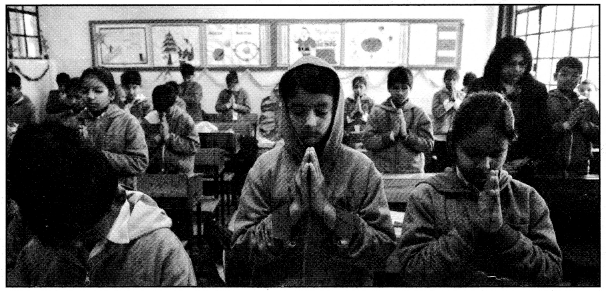Understanding Our Criminal Justice System Class 8 Civics Chapter 6 Extra Questions and Answers Social Science CBSE Pdf free download are part of Extra Questions for Class 8 Social Science. Here we have given NCERT Extra Questions for Class 8 Social Science SST Civics Chapter 6 Understanding Our Criminal Justice System.
You can also practice NCERT Solutions for Class 8 Civics Chapter 6 Questions and Answers on LearnInsta.com.
Class 8 Civics Chapter 6 Extra Questions and Answers Understanding Our Criminal Justice System
Understanding Our Criminal Justice System Class 8 Extra Questions and Answer Civics Chapter 6 Very Short Answers Type
Question 1.
Who has the legal right to get a free copy of the FIR from the police?
Answer:
The complainant also has a legal right to get a free copy of the FIR from the police.
Question 2.
When does the role of the prosecutor begin?
Answer:
The role of the prosecutor begins once the police has conducted the investigation and filed the charge sheet in the court.
Question 3.
When does the police begin their investigations into a crime?
Answer:
It is with the registration of an FIR that the police can begin their investigation into a crime.
Question 4.
What has been mentioned in the D.K. Basu guidelines about the friend and relative of the person arrested, detained or being interrogated?
Answer:
The person arrested, detained or being interrogated has a right to inform a relative, friend or well-wisher.
Question 5.
Mention the four key players in the criminal justice system?
Answer:
The four key players in the criminal justice system are the police, the Public Prosecutor, the defence lawyer and the judge.
Question 6.
Mention any one of the Fundamental Rights that Article 22 of the Constitution guarantees to every arrested person.
Answer:
The Right not to be ill treated or tortured during arrest or in custody.
Question 7.
What does the rule of law say?
Answer:
The rule of law says that every one is equal before the law. The words will not make much sense if every citizen were not guaranteed a fair trial by the Constitution.
Question 8.
What was the final verdict in Shanti’s case?
Answer:
In Shanti’s case, justice was finally done to her because she was given a fair trial.
Question 9.
By which part of justice system it is decided whether the accused person is guilty or not? Answer:
It is court of law that decides whether the accused person is guilty or not.
Question 10.
How many key players are in the criminal justice system?
Answer:
There are 4 key players.
Question 11.
What are 4 key players in the criminal justice system?
Answer:
The 4 key players are:
- The police
- The public prosecutor
- The defence lawyer
- The judge
Question 12.
What is one of the important function of police?
Answer:
One important function of the police is to investigate any complaint about the commission of a crime.
Question 13.
Mention any one Fundamental Right guaranteed in Article 22 and criminal law to every arrested person.
Answer:
The Right to be presented before a magistrate within 24 hrs of custody.
Question 14.
Name the guidelines laid down by the Supreme Court of India which had to be followed while the process of arrest, detention interrogation of any person?
Answer:
D.K. Basu guidelines.
Question 15.
On whose behalf does the prosecution must conduct the prosecution?
Answer:
On behalf of the state.
Question 16.
Where does the judge conducts the trial?
Answer:
The judge conduct the trial impartially and in an open court.
Question 17.
What does Accused means?
Answer:
This refers to the person who is tried by a court for a crime.
Question 18.
Define the term ‘offence’.
Answer:
It means that any act which is defined as crime by the law.
Understanding Our Criminal Justice System Class 8 Extra Questions and Answer Civics Chapter 6 Short Answers Type
Question 1.
What was the final judgment of the judge in Shanti’s case?
Answer:
In Shanti’s case, the judge hears the testimony of all the witnesses and acquitted Shanti of the charges of theft.
The judge also ordered the police to hand over the ? 10000 that the police had sealed. In her written judgment, the judge had made it a point to highlight S.I. Rao’s role in conducting a shoddy investigation that made Shanti spend time in jail.
Question 2.
What is there in the Fundamental Rights guaranteed in Article 22 of the Constitution.
Answer:
Article 22 of the Constitution and criminal law guarantee to every arrested person the following Fundamental Rights:
- The Right to be informed at the time of arrest of the offence for which the person is being arrested.
- The Right to be presented before a magistrate within 24 hrs of arrest.
- The Right not to be ill-treated or tortured during arrest or in custody.
- Confessions made in police custody cannot be used as evidence against the accused.
- A boy under 15 yrs of age and women cannot be called to the police station only for questioning.
Question 3.
What is the role of the judge in judiciary system?
Answer:
The judge is like an umpire in a game and conducts the trial impartially and in an open count. The judge hears all the witnesses and any other evidence presented by the prosecution and the defence. The judge decides whether the accused person is guilty or innocent on the basis of the evidence presented and in accordance with the law.
If the accused is convicted, then the judge pronounces the sentence. The judge may send the person to jail or impose a fine or both, depending on what the law prescribes.
Question 4.
Who is the Public Prosecutor and what is the role of the public prosecutor?
Answer:
In the court, it is the Public Prosecutor who represents the interests of the State. The role of the Prosecutor begins once the police has conducted the investigation and filed the chargesheet in the court. He/she has no role to play in the investigation.
The Prosecutor must conduct the prosecution on behalf of the State. As an officer of the court, it is his/her duty to act impartially and present the full and material facts, witnesses and evidence before the court to enable the court to decide the case.
Question 5.
What is FIR? Describe the process of an FIR?
Answer:
FIR is First Information Report. It is with the registration of an FIR that the police can begin their investigation into a crime. The law states that it is compulsory for an officer in charge of a police station to register an FIR whenever a person gives information about an cognizable offence. This information can be given to the police either orally or in writing.
The FIR usually mentions the date, time and place of the offence, details the basic facts of the offence, including a description of the events. If known, the identity of the accused person and witnesses is also mentioned. The FIR also states the name and address of the complainant.
Understanding Our Criminal Justice System Class 8 Extra Questions and Answer Civics Chapter 6 Long Answers Type
Question 1.
What is the D.K. Basu Guidelines and what it includes?
Answer:
The Supreme court of India has laid down specific requirements and procedures that the police and other agencies have to follow for the arrest, detention and interrogation of any person. These are known as the D.K. Basu Guidelines. These include:
- The police officials who carry out the arrest or interrogation should wear clear, accurate and visible identification and name tags with their designations.
- A memo of arrest should be prepared at the time of arrest and should include the time and date of arrest. It should also be attested by atleast one witness who could include a family member of the person arrested.
- The arrest memo should be counter-signed by the person arrests.
- The person arrested, detained or being interrogated has a right to inform a relative, friend or well-wisher.
- When a friend or relative lives outsides the district, the time, place of arrest and venue of custody must be notified by police within 8 to 12 hours after arrest.
Question 2.
What is the role of the police in investigating a crime? Explain briefly.
Answer:
One important function of the police is to investigate any complaint about the commission of a crime. An investigation includes recording statements of witnesses and collecting different kinds of evidence. On the basis of the investigation, the police are required to form an opinion.
If the police think that the evidence points to the guilt the accused person, then they file a charge sheet in the court. It is not the job of the police to decide whether a person is guilty on innocent, that is for the judge to decide.
The police investigations should always be conducted in accordance with law and with full respect for human rights. The Supreme Court has laid down guidelines that the police must follow at the time of arrest, detention and interrogation.
The police are not allowed to torture or beat or shoot anyone dining investigation. The police cannot inflict any form of punishment on a person even for petty offences.




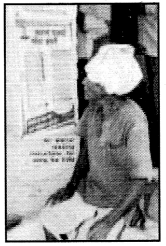
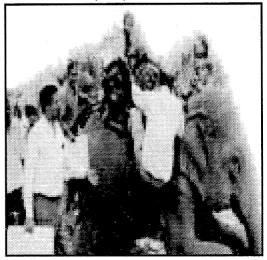
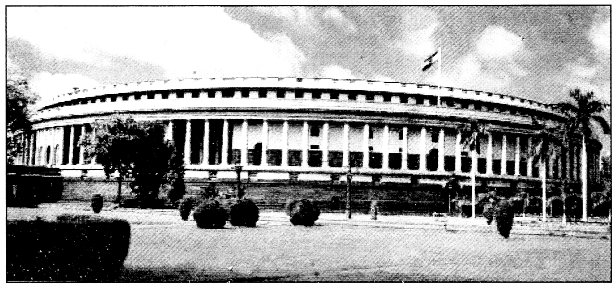
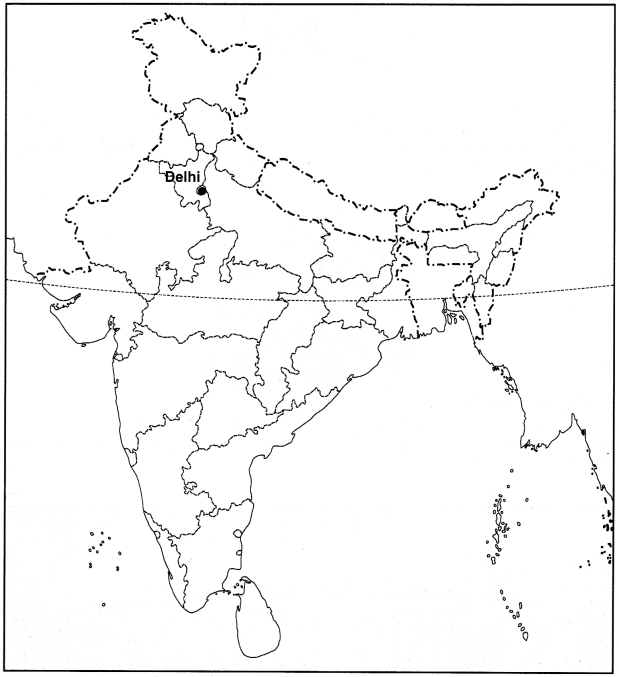
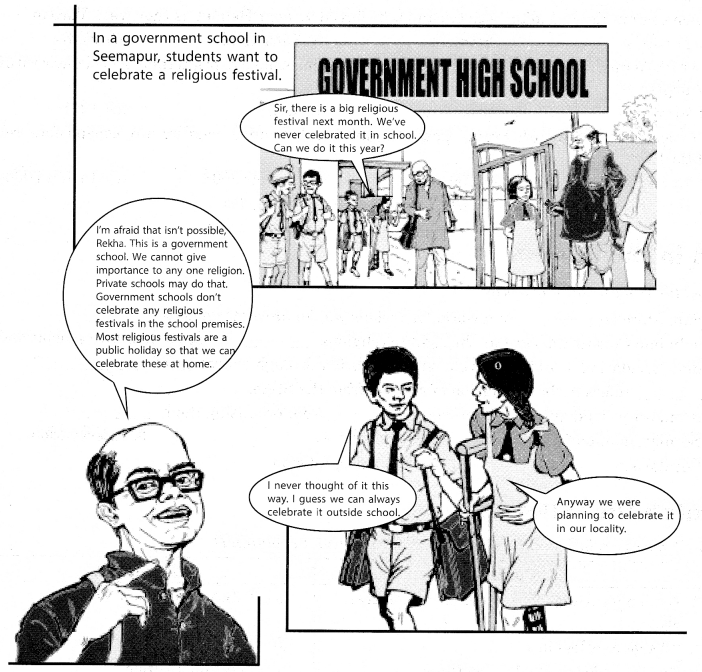 1. What was the question asked by Rekha from her teacher of the government school?
1. What was the question asked by Rekha from her teacher of the government school?